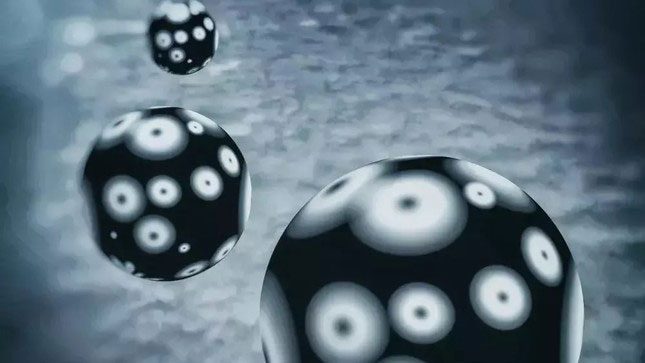For the first time, physicists have created and detected high-energy “ghost particles” within the world’s largest atom smasher. These discoveries may help unlock secrets about how stars become supernovae.
The ultra-small particles, known as neutrinos, were detected by the FASER neutrino detector at the Large Hadron Collider (LHC) – the largest particle accelerator in the world, located at the European Organization for Nuclear Research (CERN) near Geneva, Switzerland.
Neutrinos are nicknamed “ghost particles” because their nonexistent charge and near-zero mass mean that they hardly interact with other forms of matter.

Illustration of three neutrinos, the ghostly particles that hardly interact with other forms of matter.
True to their ghostly nickname, neutrinos pass through ordinary matter at nearly the speed of light. Physicists presented their findings at the 57th Rencontres de Moriond Electroweak Interactions and Unified Theories conference in La Thuile, Italy, on March 19.
“We have detected neutrinos from a completely new source – a particle collision – where two beams of particles collide at extremely high energy,” said Jonathan Feng, a physicist at the University of California, Irvine, and co-spokesperson for the FASER collaboration, in a statement.
Every second, about 100 billion neutrinos pass through every square centimeter of your body. These tiny particles are everywhere. They are created in the nuclear fires of stars, in massive supernova explosions, by cosmic rays, and through radioactive decay, as well as in particle accelerators and nuclear reactors on Earth.
In fact, neutrinos, first detected escaping from a nuclear reactor in 1956, are second only to photons as the most abundant subatomic particles in the universe.
However, despite their prevalence, the minimal interaction of these electrically neutral and nearly massless particles with other matter makes them extremely difficult to detect.
Nonetheless, many famous neutrino detection experiments – such as Japan’s Super-Kamiokande, Fermilab’s MiniBooNE, and the IceCube detector in Antarctica – have been able to detect neutrinos produced by the Sun.
Neutrinos from Supernova Explosions
However, the neutrinos reaching us from the Sun are just a tiny fraction of the ghostly particles out there. At the high-energy end of the spectrum are high-energy neutrinos generated in massive supernova explosions and during particle showers as cosmic particles collide with the Earth’s atmosphere. These high-energy ghosts remain a mystery to scientists to this day.
Jamie Boyd, a CERN particle physicist and co-spokesperson for FASER, stated: “These very high-energy neutrinos in the LHC are crucial for understanding some truly exciting observations in particle astrophysics. These new findings could help explain how stars burn and explode, as well as how high-energy neutrino interactions spark the production of other particles in space.”
Devices to “Catch” Neutrinos
To catch these ghostly atomic particles, physicists have developed a particle detection device: dense metal plates made of lead and tungsten sandwich layers of a light-sensitive liquid called emulsion. When high-energy proton beams collide inside the LHC, they create a shower of byproduct particles, a small portion of which are neutrinos that enter the LHC.
By “developing” this emulsion-like membrane and analyzing particle trails, physicists discovered that some trails were created by particle rays generated by neutrinos passing through the plates.
The six neutrinos detected by this experiment were first identified in 2021. However, physicists took two years to gather enough data to confirm their existence. Now, they hope to find many more and believe they can use them to probe environments in the universe where high-energy ghosts are produced.





















































